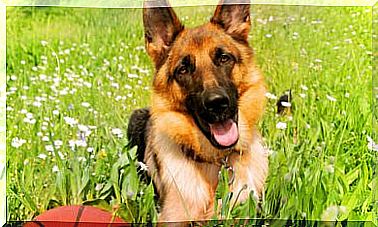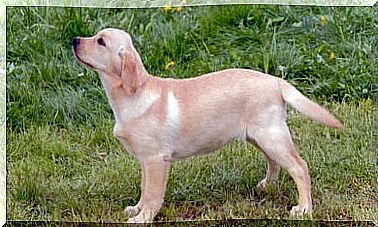All The Characteristics Of A Guide Dog
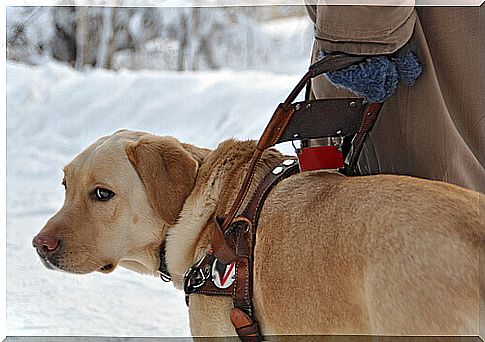
It is true that any dog is capable of giving love. Some, however, do not just sit down and return the staff to the owner. Guide dogs are animals that demonstrate great intelligence and are trained very professionally.
The history of humanity reveals how the relationship between dog and man has developed and changed. From hunting helper to pet. Thanks to their learning ability and their loyalty, dogs are awarded the title of “man’s best friend”.
The evolution of training techniques has made a difference. It has allowed dogs to improve people’s quality of life. This is the job of guide dogs.
What does a guide dog do?
The guide dog is considered an assistance animal. It is responsible for helping people who need assistance to integrate into society.
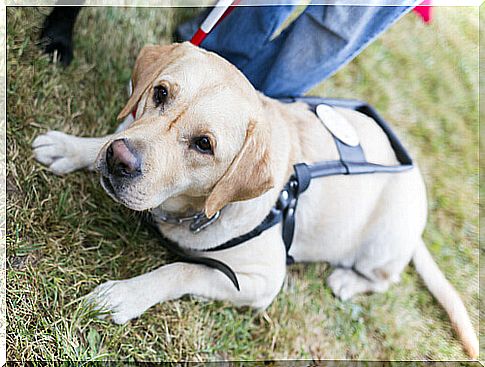
Furthermore, it is an essential support in the life of each of these people. Among other things, because it facilitates the performance of their daily activities. This is why it plays a fundamental role for individuals with visual impairments.
The origins
The idea of the guide dog was born to help veterans of the First World War in the 1920s and 30s. In Great Britain the first 4 dogs were trained to assist former soldiers who had lost their sight during the fighting.
These were dogs of the German Shepherd or Shepherd breed. These animals were also used during military operations for their intelligence and physical endurance. Females were preferred, for their ability to adapt to divide the territory and for their loyalty to the master.
Nowadays, the preferred breed for this feature is the Labrador Retriever. It has the same characteristics of the German Shepherd, but its tenderness and docility have an extra gear. Also, a Labrador’s physical appearance is less fearful to people.
In many countries, the state and non-profit organizations bear the high costs of properly training a guide dog. It is considered an important social inclusion policy.
How do you train a guide dog?
The Labrador can be a lively dog if not properly trained. His liveliness and energy make him a breed with enormous potential. Just channel all this energy towards the desired activity.
Currently, Labradors perform many duties. They are used to detect bombs and drugs, in therapies for physical and psychological ailments, and is also the favorite pet of families.
Guide dogs are trained from an early age to fulfill this role. Most vocational training schools have their own curriculum.
The guide dog as a puppy
In the beginning, to tame its intense energy, it is recommended to neuter the Labrador as a child. In the case of females, after the first heat.
Starting at 4 weeks, the puppies are subjected to various tests to track their behavior. They are exposed to various stimuli such as sounds, new environments and climate changes. They learn to walk on a leash, to sit and to find objects through commands.
From 3 months of age, it is observed how they react to moving vehicles, changing terrain, suspended obstacles, obstructions on the path and the passage of pedestrians. This is because a guide dog must be able to recognize changes along the way and to deviate course when it encounters architectural or organic obstacles.
In the hands of the trainer
At 12 months, the dog definitively enters the training school. Here he will begin his specialized training which will lead him to become a guide dog.
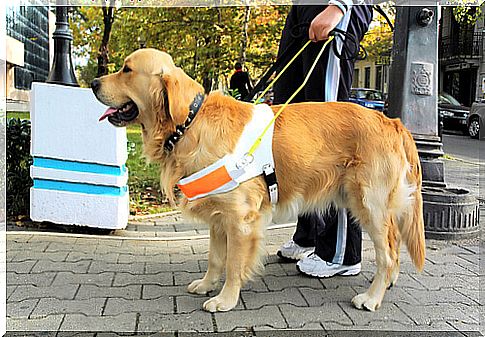
The first phase lasts 4 months. The animal learns to obey intelligently by following pre-established instructions. First, a harness made of leather is used which has a metal handle, the ends of which attach to loops that attach to the harness straps. This handle is the means of communication between dog and owner, since it is through this that the person feels the movements of the animal.
Already accustomed to the harness, the dog learns to stop at the corners of stairs or ramps. The owner must not get hurt either while going down or going up. The animal is also taught to turn left or right.
In the second stage, the dog is taught to intelligently disobey to avoid accidents to the blind. The animal also learns to overcome obstacles, to observe the passage of cars before crossing the sidewalk, to measure and outline the distance to obstacles and to return to the sidewalk to continue the journey.
Finally, the guide dog learns to take public transport, to choose the most suitable place for his owner and to stay still.






